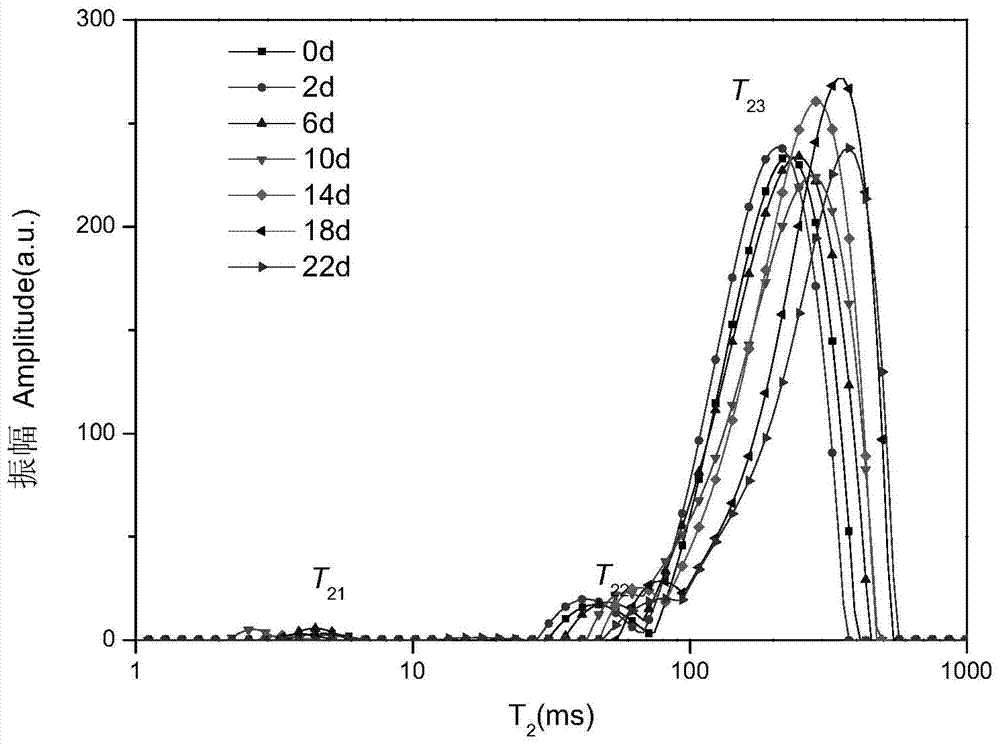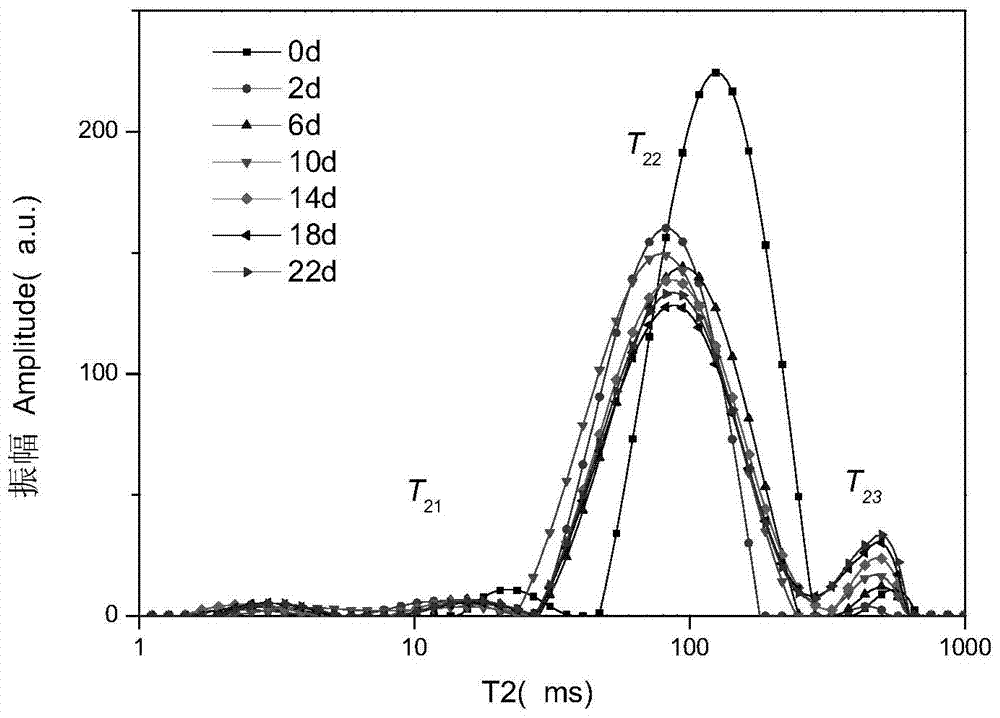A low-field nuclear magnetic resonance detection method for texture quality of sea cucumbers during salting
A low-field nuclear magnetic resonance and detection method technology, which is applied in the detection field, can solve the problems of identifying the quality of unseen sea cucumber salting, etc., and achieve the effect of fast measurement, high precision, and simple and fast operation method
- Summary
- Abstract
- Description
- Claims
- Application Information
AI Technical Summary
Problems solved by technology
Method used
Image
Examples
Embodiment 1
[0034] Take fresh sea cucumbers, remove the viscera and the five longitudinal tendons attached to the inner wall, rinse the inner wall repeatedly with clean water, and rinse 3 times with double distilled water. Pre-cooked at 70°C for 30 minutes, cooled naturally, placed in 15% salt water, and salted at 4°C for 2, 6, 10, 14, 18, and 22 days respectively.
[0035] The Mini MR-Rat nuclear magnetic resonance imaging analyzer is used to detect the salted sea cucumber samples. The parameters are set as: 90-degree pulse width P1: 13μs, 180-degree pulse width P2: 26μs, repeated sampling waiting time Tw: 5000ms, analog gain RG1 :15, digital gain DRG1:3, preamplifier gain PRG:1, NS:8, NECH:3000, receiver bandwidth SW: 200KHz, control parameter RFD of start sampling time: 0.002ms, delay DL1: 0.1ms. Then the one-dimensional inverse Laplacian algorithm is used as the transverse relaxation time T2 inversion algorithm (number of iterations: 1,000,000) to obtain the transverse relaxation char...
Embodiment 2
[0041]Take fresh sea cucumbers, remove the viscera and the five longitudinal tendons attached to the inner wall, rinse the inner wall repeatedly with clean water, and rinse 3 times with double distilled water. Preboil at 70°C for 30 minutes, cool naturally, place in saturated brine, and pickle at 4°C for 2, 6, 10, 14, 18, and 22 days respectively.
[0042] Using the Mini MR-Rat magnetic resonance imaging analyzer to detect sea cucumber samples, the parameter settings are: 90-degree pulse width P1: 13μs, 180-degree pulse width P2: 26μs, repeated sampling waiting time Tw: 5000ms, analog gain RG1: 15 , digital gain DRG1:3, preamplifier gain PRG:1, NS:8, NECH:3000, receiver bandwidth SW: 200KHz, control parameter RFD of start sampling time: 0.002ms, delay DL1: 0.1ms. Then the one-dimensional inverse Laplacian algorithm is used as the transverse relaxation time T2 inversion algorithm (number of iterations: 1,000,000) to obtain the transverse relaxation characteristic map of each sa...
Embodiment 3
[0049] Take fresh sea cucumbers, remove the viscera and the five longitudinal tendons attached to the inner wall, rinse the inner wall repeatedly with clean water, and rinse 3 times with double distilled water. Precook at 70°C for 30 minutes, cool naturally, place in dry salt, and pickle at 4°C for 2, 6, 10, 14, 18, and 22 days respectively.
[0050] Using the Mini MR-Rat nuclear magnetic resonance imaging analyzer to detect sea cucumber samples, the parameter settings are: 90-degree pulse width P1: 13μs, 180-degree pulse width P2: 26μs, repeated sampling waiting time Tw: 5000ms, analog gain RG1: 15 , digital gain DRG1:3, preamplifier gain PRG:1, NS:8, NECH:3000, receiver bandwidth SW: 200KHz, control parameter RFD of start sampling time: 0.002ms, delay DL1: 0.1ms. Then the one-dimensional inverse Laplacian algorithm is used as the transverse relaxation time T2 inversion algorithm (number of iterations: 1,000,000) to obtain the transverse relaxation characteristic map of each ...
PUM
 Login to View More
Login to View More Abstract
Description
Claims
Application Information
 Login to View More
Login to View More - R&D
- Intellectual Property
- Life Sciences
- Materials
- Tech Scout
- Unparalleled Data Quality
- Higher Quality Content
- 60% Fewer Hallucinations
Browse by: Latest US Patents, China's latest patents, Technical Efficacy Thesaurus, Application Domain, Technology Topic, Popular Technical Reports.
© 2025 PatSnap. All rights reserved.Legal|Privacy policy|Modern Slavery Act Transparency Statement|Sitemap|About US| Contact US: help@patsnap.com



